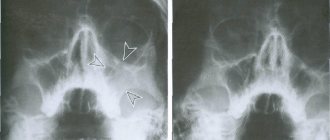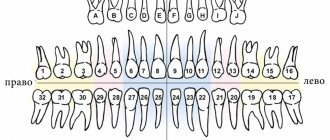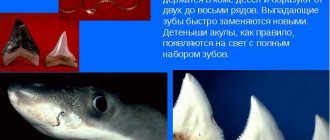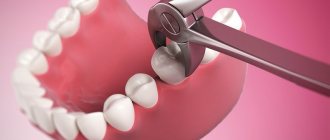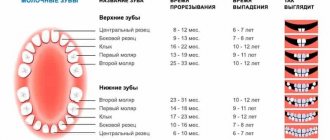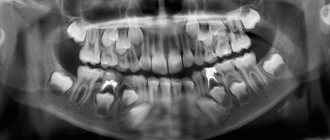CT scan of the upper or lower jaw allows you to create a three-dimensional model of the structure under study and thereby plan the course of surgical intervention. The main indication for this type of examination is implantation. Thanks to digital images and computer planning of the placement, shape and size of implants, the safety and predictability of the dental restoration procedure is significantly increased.
CT of the jaw is an innovative method of visualizing the maxillofacial area, with greater diagnostic value than panoramic X-rays, allowing for highly accurate three-dimensional anatomical images of the teeth. This is a non-invasive examination of bone density and tooth structure from the inside.
The examination does not require special preparation. Before performing it, you only need to remove jewelry, glasses, removable dentures and orthodontic devices from your mouth.
Make an appointment with a specialist, without queues, at a convenient time
+7
Sign up
3D CT – what is this procedure and what is it for?
3D imaging of the jaw is one of the main dental procedures used in diagnosis. The data obtained allows us to assess the condition of a specific maxillofacial area and plan further treatment.
This diagnostic tool is universal; it is used by both therapists and orthopedists, periodontists and implantologists. Using a 3D image, the therapist assesses the condition of the roots and canals of the tooth, and clarifies the localization of the inflammatory process.
An orthopedist can examine the anatomical structure of the temporomandibular joints, an implantologist can examine the volume and density of bone tissue in the area of the upcoming operation, as well as the parameters of the maxillary sinuses (maxillary sinuses).
Sometimes a large part of the tooth remains, as they say, “behind the scenes”, and the dentist simply cannot see it. Then computed tomography comes to the rescue, which allows you to examine the hidden area and prevent unpleasant consequences for the patient.
Until recently, the “gold standard” for instrumental diagnostics was a panoramic image. Today there is a more advanced method in which the maxillofacial area is scanned using computer technology.
The difference between a CT scan of the jaw and an X-ray
The difference between these instrumental diagnostic methods is quite large. There are times when their differences play a decisive role in making a correct diagnosis.
The result of the x-ray image is assessed exclusively in one plane, which does not give a detailed picture of what is happening. Bone formations may overlap each other, and the radiologist may not be able to clearly distinguish the overlapping images.
CT, on the contrary, provides a three-dimensional model of the organ; the upper and lower jaw can be assessed in several projections at once and even the internal structure of the bones can be seen.
X-ray of the jaw
Advantages of X-ray:
- low cost of the procedure - the study can often be done free of charge as part of the compulsory medical insurance program;
- wide availability - x-rays are performed in almost any clinic;
- ease of implementation - no retraining of specialists is required, basic education in the field of radiation diagnostics is sufficient;
- speed of execution.
With a CT scan of the jaw, things are a little more complicated. Prices for this service are traditionally higher, which is due to the greater complexity of the equipment and highly qualified medical personnel. The relatively high cost is compensated by the informativeness of the diagnosis - the structure of the jaws can be assessed from all sides, there is no overlap or blurring of contours characteristic of radiography.
At the medical ]“Magnit”[/anchor] in St. Petersburg, prices for CT scans of the jaw are among the most loyal in St. Petersburg due to periodic promotions for diagnostics.
Unique visualization method
A computed tomograph produces a high-quality three-dimensional image of an individual tooth, maxillary sinuses, one or both jaws. Unlike standard panoramic images, a 3D tomogram allows the doctor to see the desired anatomical structures in a virtual section, from any angle.
During the procedure, the doctor can enlarge, rotate and study the maxillofacial area of interest at the required angle, which is unrealistic with conventional radiography.
Computed tomography is an integral and primary stage of examination before implantation. It allows you not only to assess the condition of bone tissue, but also to measure its height, width and density. Moreover, three-dimensional beams help to choose the optimal method for installing implants through preliminary virtual surgery.
3D CT is a multi-purpose and indispensable diagnostic tool that makes it possible to avoid many medical errors and complications. Thanks to this examination, the quality of treatment increases significantly and eliminates unnecessary traumatic operations.
What is a CT scan of the jaw and what does it show?
A CT scanner consists of a ring through which a table with the patient lying on it passes while a series of sequential images are taken.
Computed tomography shows all the necessary structures:
- body and all four processes of the maxilla;
- body and branches of the lower jaw;
- adjacent bone and cavity structures - maxillary sinuses, nasal bones.
Variant of the norm on a CT scan of the jaw
Soft tissues are capable of transmitting X-rays, and they appear in gray shades on the image. Dense tissues, on the contrary, absorb the rays and appear white on the tomogram.
The intensity of darkening of individual areas is the main diagnostic indicator, by analyzing which the doctor will be able to determine the presence or absence of pathologies in your body.
Indications
Computed tomography is prescribed to identify:
- hidden carious lesions;
- defects in the structure of the jaw and dentition;
- fully or partially unerupted teeth;
- dystopic dental units with incorrect location or direction of growth;
- supernumerary teeth;
- damage to the dentition due to jaw fractures and other injuries;
- pathologies of the temporomandibular joint TMJ;
- tumors, cysts and other neoplasms in the jaws;
- condition of periodontal and periodontal tissues in case of gum disease, inflammation in the root area;
- number of roots, canals of teeth;
- cracks in the roots of teeth;
- features of the structure of bone tissue before jaw surgery (installation of implants, bone augmentation).
A 3D photo must be taken before dental implantation. The fact is that the jaw bone is clearly visible on a regular x-ray, but it does not allow assessing the soft tissues. On a three-dimensional tomogram, you can see in detail not only the bone, but also the nerve of the lower jaw, as well as blood vessels.
A 3D tomogram is much more informative than a panoramic image or targeted photographs of all teeth.
Carrying out a CT scan of the jaw in St. Petersburg
Computed tomography can be performed in two ways:
- using a contrast agent;
- without the use of contrast agent.
If the first method is used, the list of contraindications increases:
- diseases of the urinary system (renal failure) with an increase in creatinine levels - since the contrast is excreted by the kidneys, there is the possibility of severe complications during its removal from the body;
- diabetes mellitus when taking oral hypoglycemic drugs (consultation with the attending endocrinologist with correction of therapy is required before the procedure);
- children under 12 years of age;
- allergy to iodine, individual intolerance;
Breastfeeding women need to remember that after contrast, they should not breastfeed immediately, they should express milk for at least two feedings in a row, and wait until the drug is completely eliminated from the body, so as not to harm the baby.
Computer tomograph Siemens
What is the purpose of using a contrast agent?
A contrast agent is used to improve the interpretation of the results. The drug is impenetrable to X-ray radiation: it helps to more clearly visualize the structure of internal organs, tissues and pathological formations. There is no special preparation before the study.
When examining the upper and lower jaw, the patient should be in a motionless, relaxed state, in a horizontal position the entire time the scan is in progress. In order to prevent irradiation of other parts of the body, it is covered with a lead robe. The procedure is painless and does not last long (including preparation, about 10-15 minutes). The patient does not feel any discomfort.
The tomograph is connected to a computer, which reads information from it. The latter is automatically saved to the database, and if a paper copy is lost, it can be easily restored.
CT scan before implantation
Diagnostics using a computed tomograph before installing implants allows, first of all, to determine whether implantation is necessary at all. The image will give a complete picture, and the doctor will see where the teeth are missing, whether there are problem units, and whether they can be cured.
The 3D tomogram will show:
- hidden carious cavities;
- unerupted and “extra” teeth, which may interfere with the installation of artificial pins;
- properties of roots, canals - curved, narrow and long canals require a special approach, which should be taken into account before implantation;
- bone dimensions in height and width, on the basis of which the type and size of the implant is selected;
- condition of bone beams, partitions, voids in the jaw bone;
- the presence of inflammatory processes in the root area - cysts, granulomas, abscesses where implants are planned to be installed. All this needs to be treated or removed before surgery;
- inflammation in the paranasal sinuses and lacrimal ducts, which can become a temporary obstacle to implantation;
- density, size, inclination of the alveolar process, thickness of the cortical bone layer, taking into account which the optimal type of artificial pin is selected;
- the physiological structure of the maxillary sinuses, the mandibular canal to determine the angle of inclination of the implant rod;
- defects and anomalies in the structure of the dentofacial apparatus;
- quality of installation, strength of fixation of implants after surgery for their implantation;
- severity and nature of traumatic injuries in fractures.
Based on the results obtained, a virtual operation to install the rods is performed. The appropriate size of the titanium pin is selected, its inclination and the point of implantation are determined, bypassing the anatomical structures. Thus, the final outcome of implantation is modeled.
Next, the tomographic data is loaded into the computer, and the program creates a three-dimensional model. The patient’s personal surgical template is printed on a 3D printer - an overlay with guide holes for inserting rods.
During implantation, the template is placed tightly on the gums, and the placement of the pins is carried out with extreme precision.
Features of the event
The doctor instructs the patient to remain still. Then it is necessary to remove jewelry, clothing items with metal parts, and the radiologist proceeds directly to the examination.
Cone beam computed tomography of teeth is performed standing or sitting. The patient is offered a lead apron or vest; he places his head on a special stand so that his forehead rests against the bracket. You must stand still for 20-25 seconds, during which time the equipment records panoramic images. Next, the program produces a 3D design, with the help of which the specialist draws conclusions about the state of the dental system.
The examination is completely painless.
Multispiral or cone beam?
A multispiral tomograph performs layer-by-layer scanning of an object along a spiral trajectory caused by the continuous movement of the table and the X-ray tube relative to each other.
Most often, MSCT - multislice computed tomography - is used in maxillofacial surgery for facial injuries and pathologies of the temporomandibular joint.
In dental practice, especially when planning implantation, this method is not widely used due to insufficient data accuracy. Since the patient lies down during the examination, the jaw connection is distorted.
In addition, the radiation level of MSCT can reach 1000 μSv, which is unacceptable, since implantological treatment involves more than one procedure over several months.
Cone beam CBCT is a more modern, accurate and safe method compared to MSCT. Its radiation exposure is less, about 25-50 μSv, which makes it possible to carry out the procedure several times a year.
Contraindications to CT scan of the jaw
There are a number of contraindications for which the procedure is not recommended.
These include:
- weight more than 150 kg or girth more than 150 cm (the device is designed for a load of up to 150 kg);
- pregnancy (the risk of developing defects in the fetus increases);
- lactation period (during the procedure, rays can directly affect the composition of a nursing woman’s milk);
- severe mental illness (during the procedure the person must be at rest);
- the presence of metal objects in the area of interest, as they can reduce the information content of the results;
- children under 5 years old;
3D CT or panoramic image?
An orthopantomogram allows the doctor to assess the condition of the teeth, root canals, and soft tissues. With its help, hidden inflammations, abscesses and abnormally located teeth are revealed.
However, a panoramic photo does not give a 100% accurate picture; the error is about 20%. Even a slight shift causes the focal spot to shift, and the image is compressed or stretched.
Due to the difference in the refraction of X-rays by tissues of different densities, it is impossible to assess the properties of the cancellous bone layer, since it is simply not visible behind the denser periodontium.
A two-dimensional orthopantomogram is, in fact, an auxiliary technique that gives a general idea of the condition of the oral cavity and identifies mainly obvious pathologies. It does not show the configuration and structure of the alveolar process at the desired level.
The advantage of a three-dimensional 3D tomogram is that it produces not one flat photo, but several consecutive images from different angles.
The doctor sees and evaluates all necessary objects located at any depth, from all sides and at different angles.
Contraindications and restrictions
The patient’s weight – heavy weight may not allow the examination to be carried out since CT scanners have weight restrictions.
CT scanning is not advisable for persons under 14 years of age, since at this age the body is actively growing and radiation exposure can be risky.
The presence of kidney disease, decompensated heart disease, and pregnancy are contraindications for CT scanning.
The presence of an allergy to iodine-containing products often does not allow CT scanning with contrast, since contrast agents have iodine atoms in their structure, and this sharply increases the risk of dangerous allergic conditions such as anaphylactic shock.
How to make a 3D tomogram
Usually the procedure is performed standing, the patient bites a small flat plate with his teeth and stands without moving for 15 to 30 seconds. The device makes several rotations around the head, managing to take about two hundred pictures in various projections.
In 10-15 minutes, the information is processed and transferred to electronic media.
We invite you to make a three-dimensional tomogram in our clinic using the latest generation dental tomograph. Sign up for the procedure online or by phone at a time convenient for you.
Preparation
Before performing a CT scan of the jaw, no special preparation is required, with the exception of studies with contrast. Before conducting a contrast study, it is recommended to refrain from eating 6-8 hours before the procedure.
During the procedure, the patient lies on the scanner table. The head can be fixed to achieve immobility during the examination. The duration of the procedure is on average 20 minutes. If contrast is used, which is administered intravenously before tomography, the duration of the study can increase to 30 minutes.


